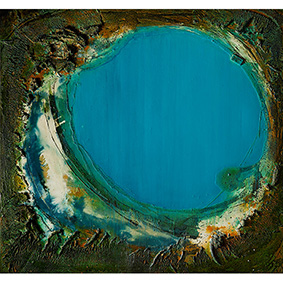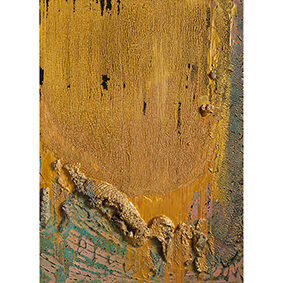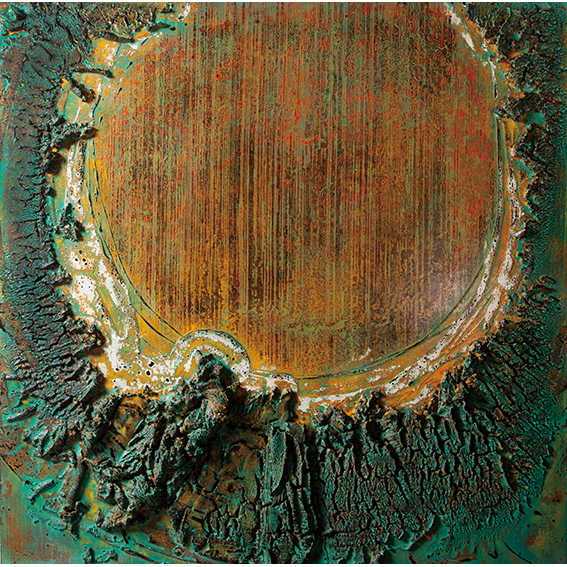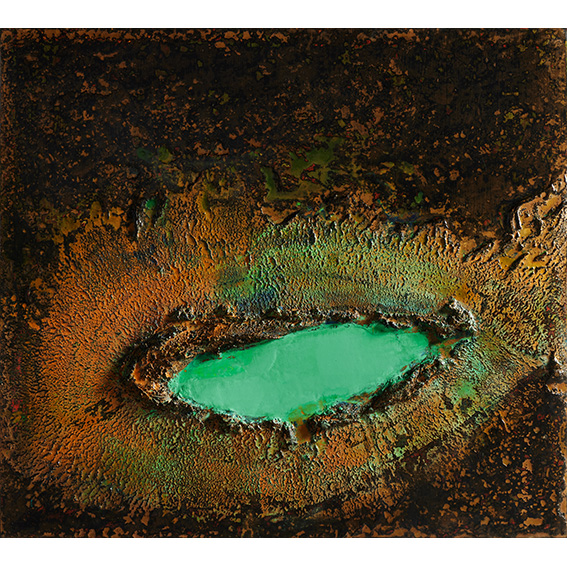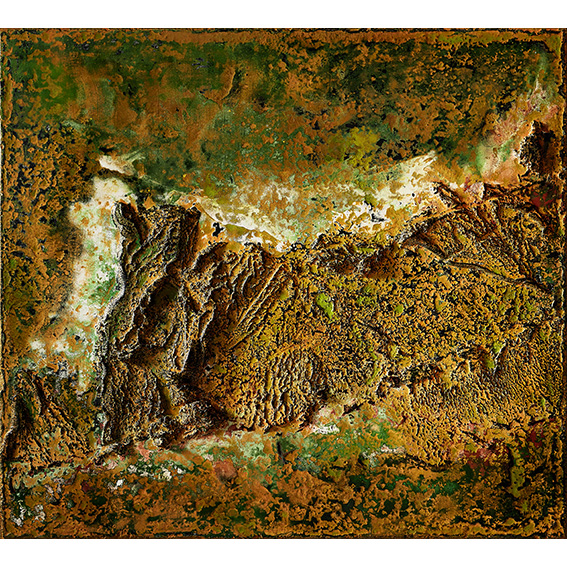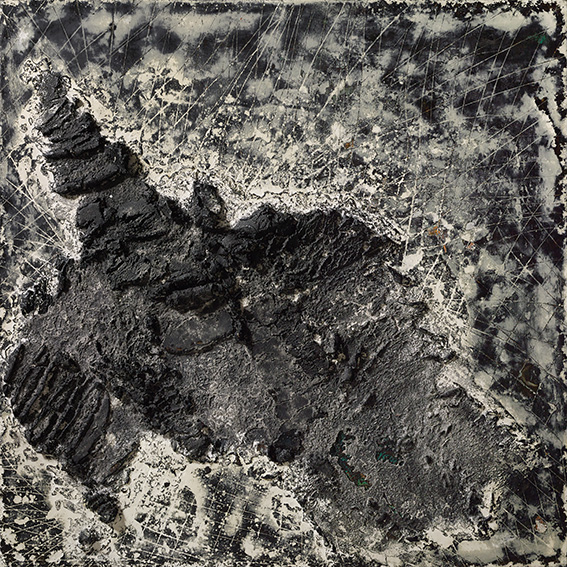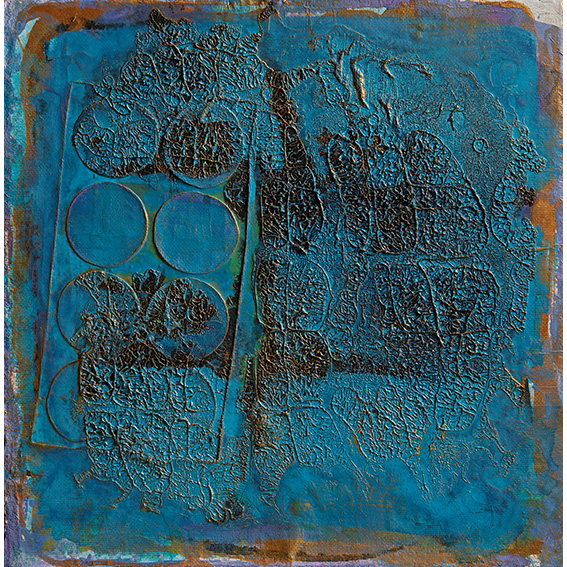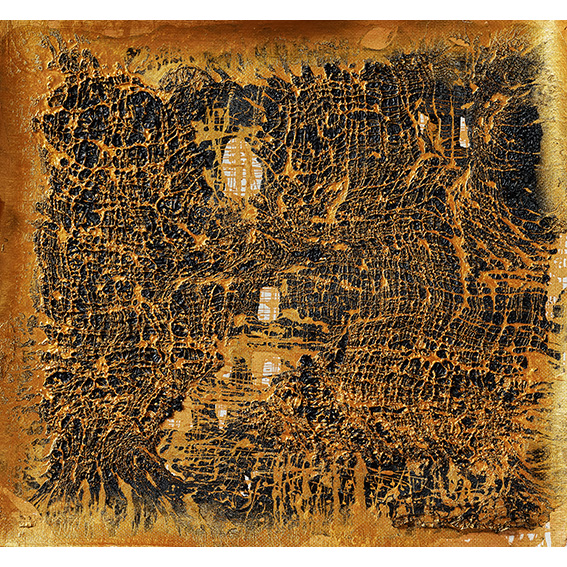QU Qianmei: The Splendor of Gold and Ink
Blending East and West: A Unique Female Artist
Qu Qianmei perfectly exemplifies the unique position of female artists in both contemporary China and the international community, merging "painting" from ancient and modern cultures. Much like her compatriot Pan Yuliang (1899–1977), her tumultuous life experiences have both refined and defined her, allowing her to paint compelling scenes with her unique style, akin to "The City Draped in Gold Armor," where her subtle brushwork and intense inks find a perfect harmony.
Accumulation of Years
Qu Qianmei was born on October 10, 1956, in Lian, Zhejiang. She has been studying landscape painting since childhood. "When we were young, learning to paint, the Mustard Seed Garden Manual of Painting was the classic of classics, an essential part of our education. Though it seems that its influence on me has become increasingly limited now," she recalls. Zhejiang’s artisanal industry was very developed, and Qu was fond of observing the coloring techniques in furniture production. During summer vacations, she worked as an apprentice at a furniture factory, applying gold leaf and floral decorations. Her experience there taught her how the number of coatings and polishings affected the color and tone of the wood’s surface. She also learned that the soaking process altered the wood's density and stability, with its internal structure slowly changing, akin to fossilization. This exposure shaped her artistic development. Being a coastal region, Zhejiang also offered abundant fossilized oysters and shells, unknown to most, but powdered oyster shells became a treasured pigment that frequently appears in Qu's work.
In 1979, Qu entered Lian Normal School to study traditional Chinese calligraphy and painting. Life took unexpected turns, but a new opportunity arose in 1986 when she left China for Paris. There, she had to start over in a foreign land. In Paris, she met Chinese artists like Wang Yancheng, who introduced her to the vast realm of abstract art. Abstract and concrete, like yin and yang, are eternally in dynamic equilibrium, challenging any simple encapsulation.
Returning Home Amid Changing Times
In 2008, after 22 years abroad, Qu Qianmei decided to return to her homeland. She followed the advice of her friend Ma Lu and began studying oil painting under Professor Zhang Yuan at the Central Academy of Fine Arts in Beijing. Her works, rich in color and depth, were immediately invited to various exhibitions upon their debut. From then on, she continued to create and innovate, using kaolin clay, cinnabar, and rosewood as materials to craft large, heavy, and thick masterpieces. Her art is distinguished by its exploration of time within space, drawing significant attention. She found creative resonance among the "Five Masters"—Antoni Tàpies, Pierre Soulages, Hans Hartung, Chu Teh-Chun, and Zao Wou-Ki. In April 2012, Galerie Lelong held a solo exhibition of Tàpies. Qu would immerse herself in the gallery whenever possible, inspired by his work. Naturally, she sought out the works of Soulages, Hartung, Chu Teh-Chun, and Zao Wou-Ki. Despite differing forms and backgrounds, their pieces share a common breath and fate. Like Soulages, who would be transfixed by the light filtering through the vast stained glass of Conques Abbey, or captivated by the "ultra-black" works in the Musée Soulages. Chu Dequn was equally obsessed with the interplay of paint and canvas backgrounds.
The Splendor of Gold Armor
Qu Qianmei masters the commanding and even imposing golden hue, making it engaging. She uses gold to stand alone yet complement entire sections of green and blue. In ancient times, palace artists would apply paint to rolling drums, depicting sprawling landscapes, while towering mountains were subtly adorned with ink, finally accented with blue and green hues—a technique mirrored in Qu's approach. Wang Ximeng (1096–1119) of the Northern Song dynasty exemplified blue-and-green landscape painting. Zhang Daqian (1899–1983) was particularly sensitive to the explosive power of color, portraying the cycle of lotus flowers and leaves with exaggerated, even dramatic brushstrokes. For Qu Qianmei, it is another story. She creates a world uniquely hers, an emotional realm brimming with sensory stimulation. She can make golden armor traverse between blues and greens, like a general patrolling the frontier, reminiscent of the works of Hercules Seghers. Hercules Seghers, a great Dutch painter and engraver, was born around 1590 in Haarlem and passed away around 1638 in Amsterdam. His art, whether watercolor or engraving, skillfully presents existence and illusion, real and surreal, transporting viewers into an alternate dimension.
Renowned for his prints, Seghers primarily created landscapes using copper engraving techniques to mimic painting effects on colored paper or canvas. This innovative method required reapplying ink to the copperplate after each print, rendering every print unique. His work involved using colored ink to print on prepared paper or canvas, followed by cutting them to fit specific spatial requirements. This complex technique is also visible in Qu Qianmei's black series, a topic for further discussion. Although centuries apart, these two artists share a relentless pursuit of artistic innovation, aligned in spirit.
Abstraction and Faith
Monochrome or colorful? Like other abstract artists, Qu Qianmei agrees with the notion of "one painting, one world." The artwork's content reflects the artist's worldly reflections, fixed onto the canvas. It's a subjective journey of personal interpretation. More precisely, it captures the artist's epiphany in specific times and spaces, expressed in their unique language. Qu's trip to Tibet left a profound impact. Observing the devout faith and ascetic practices of Tibetans, who prostrate themselves every few steps in devotion to Buddhism, deeply moved her. Upon returning to Beijing, her creative style changed. She saw sparks in the historical dust, igniting a blaze of inspiration.
This significant turning point raises a crucial question about the role of color in painting. Whether it be the earth tones of ochre, the rising dominance of vibrant colors, or the iconic lacquer colors she pioneered since 2011—all remain vital. Later, these colors found expression in her tempera creations.
Qu's works vary in size. Take, for example, a massive piece over four meters long and two meters wide, employing expensive materials like clam powder and lacquer to enhance its visual impact. Nearby, a six-square-meter square piece seems poised to soar skyward, reminiscent of Delacroix. Her circular tempera works, where Pu'er tea serves as pigment to add weight, leave one in awe. The use of acrylic evokes Odilon Redon’s (1840–1916) dreamscapes. The application of mixed media reminds me of the familiar yet strange textures in Dubuffet’s art brut, a testament to nature’s transformative power, capable of turning the mundane into the marvelous. We stand before them, much like before frescoes in ancient caves, marveling at the natural forces that shaped these masterpieces.
From Originality to Diversity
In Qu Qianmei's recent black series, we witness vitality in the monochromatic. Black flows with freedom, constantly transforming, explaining why Chinese artists hold this color dear. In the West, Soulages challenges "ultra-black." Qu's 2022 work, "Shanghai Nights," delivers a crushing impact, suffocating yet inspiring with its bleakness—"The black night gave me black eyes, but I seek the light." From an art critic’s perspective, the evolving lines and textures suggest time permeating space, making it part of the work. Layer upon layer of paint, each sanding, creates a moving narrative. The use of lacquer considers its physical properties and ability to create slight elevations on the canvas. In a recent interview, Qu said: "As a female artist, I know how to express femininity's softness and sweetness. Yet life's impermanence has taught me that women must be strong. My work also embodies masculine vigor and unyielding strength."
Lately, Qu has taken an interest in papermaking. With strict demands on texture and weight, she visited a paper mill in Anhui, exploring their processes and techniques. After returning to Shanghai, with support from Shanghai Artron Publishing, she released 20 limited edition prints, printed on imported Japanese paper known for its resistance to liquid and high-density pigments.
Natural Methods: A Commitment to Quality
Aligned with the philosophy of "Dao Follows Nature," Qu insists on natural pigments for her creations. To secure top-quality materials like Guizhou lacquer and Anhui's azurite and cinnabar, she meticulously communicates with local distributors, carefully selecting her mediums. This relationship between artist and supplier mirrors the European tradition of artists specifying suppliers to ensure their work's distinctiveness. The infusion of vibrant pigments breathes new life into Qu's grand canvases. The dense surfaces evoke the majestic murals of grottoes, standing silently through centuries, watching us while constantly shifting in fleeting beauty. This creative vision, steeped in Daoism and liberal thought, resonates with Hsiao Chin's (born in 1935, Shanghai) philosophies. Art creation fulfills an inner need for artists, and amidst these vibrant colors, Qu Qianmei becomes a magical conjurer, passionately bringing life to each brushstroke and hue.
by Christophe Comentale
Dr. Christophe Comentale is a Sinologist qualified as a research mentor in Chinese art history and archaeology. He has held leadership positions in several renowned cultural and art institutions, including serving as the Director of the Centre Pompidou in France, Director of the National Palace Museum in Taiwan, Director of the Musée de l'Homme in France, and Honorary Director of the National Museum of Natural History in France.In academia, Dr. Comentale has made significant contributions. He teaches Chinese art history at the Catholic University of Paris and the Paris Chinese Cultural Center. He lived in China for seven years and has served as a scientific advisor for the Museum of Everyday Life in China (Lodève), a researcher at the Museum of Chinese Ethnic Minorities (Beijing), and an honorary researcher at the Linyi Archaeology and Cultural Heritage Museum (Shandong).


